A far too in-depth look into one of the most boring yet vital LARP topics: storage solutions for LARP gear…
LARP Storage Solutions
This week, we’re going to take a look at one of the most boring topics Sport LARPs and LARPers in New England have to deal with: storage. With our events running over the course of a weekend up to eight (you crazy bastards at LIONE and MJ – we see you!) times a year, investment in large, impressive set-pieces, 10’ tall monsters, and epic, layered costumes boils down to how easy it is to pack it up, move it, set it up, break it down (or take it off) and then store it until it is needed next. Storage is one of the humblest and yet key factors holding back any number of games (and gamers) from truly elevating their look, and, as we shall see, with good reason. We’ll break this discussion down in to two parts – personal storage, more targeted at players, and game storage, the purview of organizers.
Player Storage
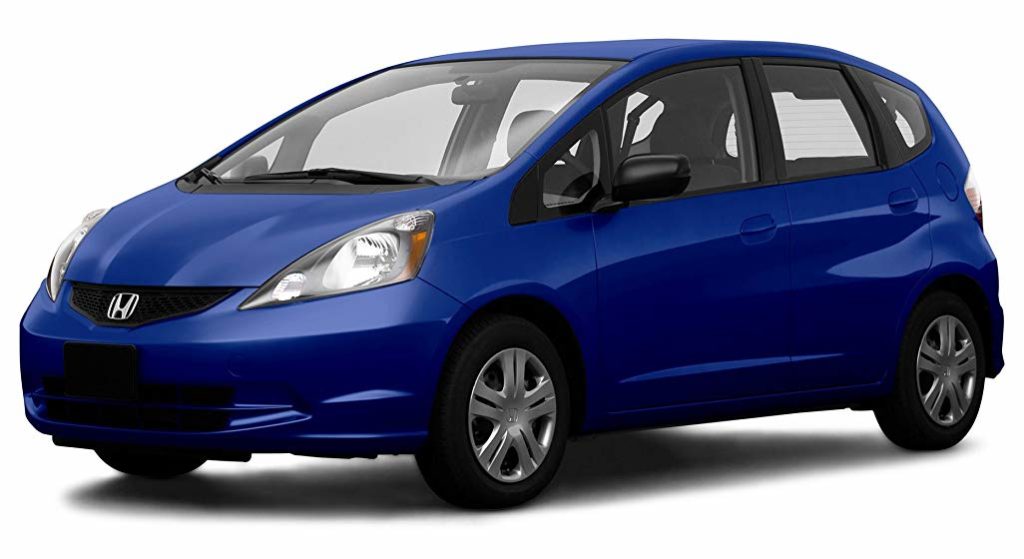
Beyond last minute crafting and a flurry of message board posts and oh-wait, did I actually *pay* for the event? realizations comes the Thursday Night (or, dear friends, Friday Night) tradition of hastily jamming prized possessions into containers; it’s like moving in about 3 hours, only you get to come back home with far too much laundry to do.
Most LARPers have generally agreed upon the basic tote (or bin) for organization and transportation of thousands of dollars of brocade and leather they manage to acquire within 6 months of joining the hobby. Bin price and quality can range all over the place, from about $4 for the basic 18 gallon container to up to $20 for larger, more durable ones with locking lids.
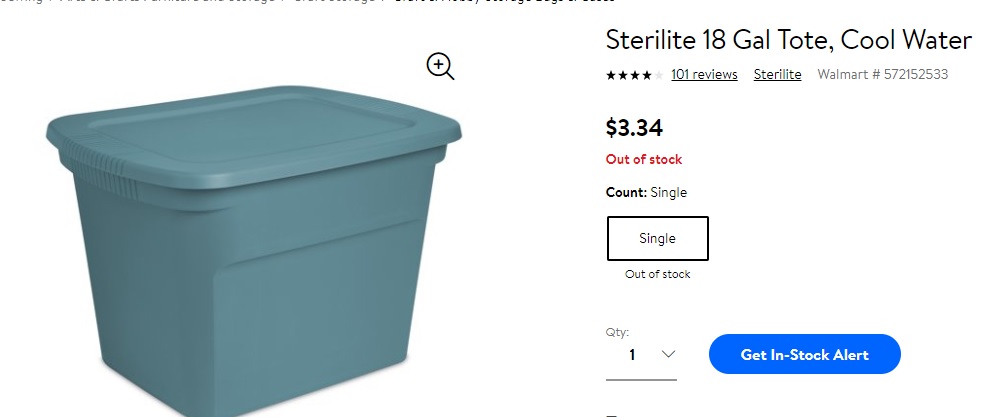
The most important factor in picking out your bin of choice, but one that is often hilariously overlooked, is quite simple – always buy the same one! Companies subtly vary sizes and lids with each season, and it will save you miles of headaches and spilled contents if all your bins match your lids. Whichever one you first purchase as a nascent LARPer with sweatpants and a role-play shirt to store should be the standard evermore.
Black or grey bins tend to be the most popular, as they are the least garish when left out in a cabin in the mad dash to get to out of game opening which almost never proceeds in game opening by upwards of 2 hours, although the more frugal of us can end up with a wide variety of green and red ones, as they tend to go on sale immediately after the winter holiday season at most major retailers. Translucent bins can offer the advantage of seeing the contents, but they are usually twice as expensive and since the majority of items in them are stacked clothing and leather the visibility isn’t necessarily worth the cost.
For the advanced class, there are ¾ and ½ sized bins available (generally translucent). There is one key advantage here – they fit under camp bunks. Depending on your site, most of the 18 gallon ones may as well, but the shorter sizes definitely will. If you’re planning on running an in-game space out of your cabin, having the flexibility of easily having everything out of site may be worth the added expense.
Another note; it may seem wasteful to pack, say, a sleeping bag in one whole tote. If you have the space in your irresponsibly purchased vehicle of choice (commuting to work in an F-150 because ‘reasons’ are we now?), the more-totes-the-better route is the way to go. Sites are wet, muddy and dirty – having everything fully contained will save you the hours of work later on, spreading out a damp and muddy sleeping bag over the railing of your 3rd floor walk-up when the loose item is inevitably fumbled down a muddy slope Sunday at 4pm in a rush to get off site. The same goes for hats and other girthy items.
Once you have all your personal items packed the remaining issue is weapons. Ranging from 24” (bad, bad short claw fighter) to 72” (pole-arms and, at some odd games, staves) the key purchase here is a used ski bag, generally acquired from a 2nd hand sporting goods store with a dog as a mascot or a high school sports equipment swap-meet featuring far too many over competitive men in porn ‘staches and beer sweaters.

Ski bags are about 76” or so long, zip up, offer a shoulder strap, and can hold nearly a dozen weapons including swords with cross guards. Unless you are a dedicated two-handed sword fighter (the few, the proud, the reach-disadvantaged) or have a role-playing great axe with a head the size of a topsail, weapons are easily stored and transported in this type of bag.
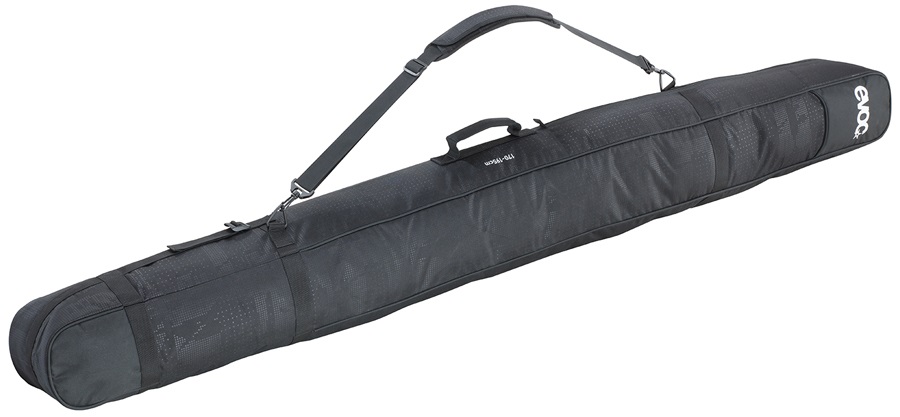
For the player at home, bins can easily be stacked on top of one another, but there is a potential issue. The cheaper bins, while well suited for packing and transport, have lids that can crack far easier than one might suspect. The easiest storage option here is a wire rack. While prices have slightly increased, this type of racking can be set to allow 3 levels of bin storage as well as a space underneath for slimmer items, such as half bins or weapons.
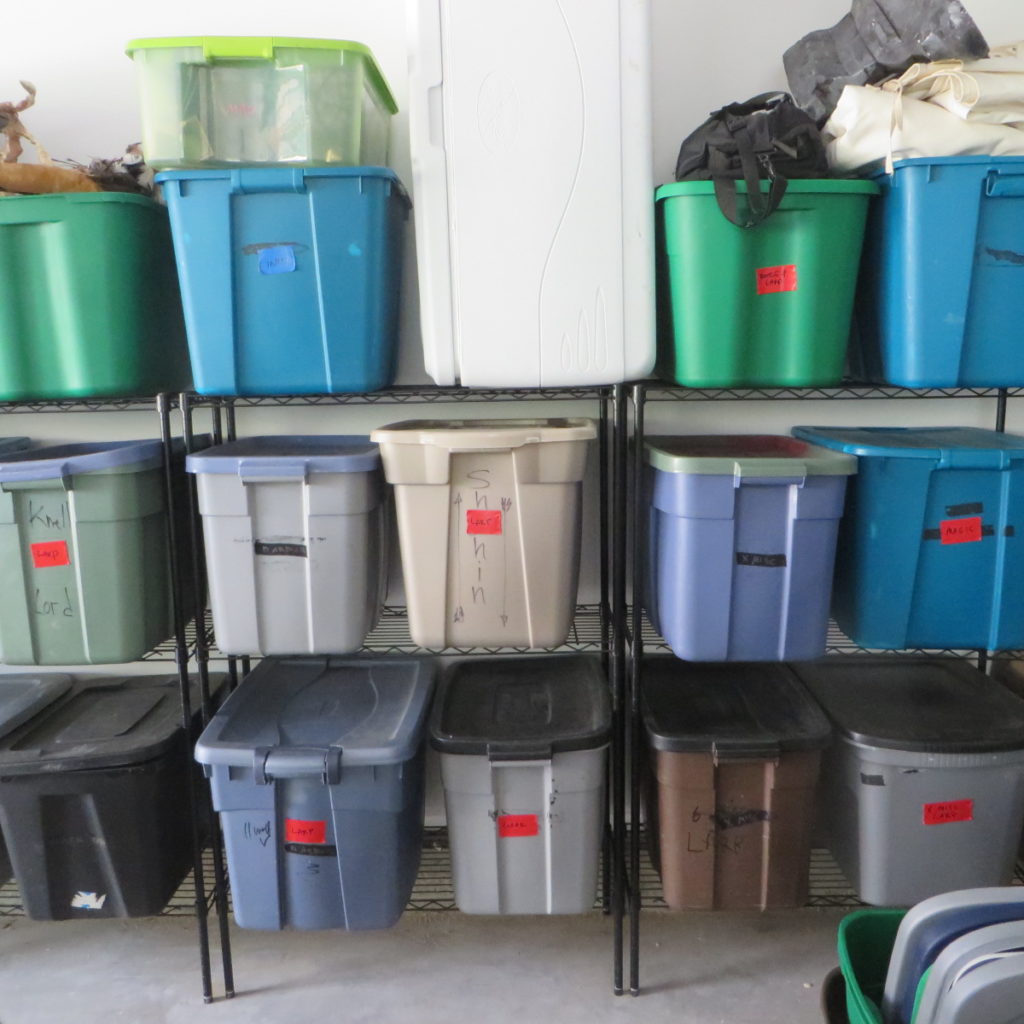
Finally, and to loop back around to In Game again, bins can easily double as flat surfaces in cabins. By packing a thin, dark colored bed sheet or tapestry in every 3rd bin to be thrown over the stack, Bins can easily be disguised or even put to use as small ritual tables, etc. Note: do not sit on Bins. Even the sturdiest will either crack or deform under the weight of a full sized human/mastiff; even while totally loaded with goods.
Organizer Side
As mentioned earlier, one of the main limiting factors of impressive set ups, large creature builds and well-costumed NPCs is storage. We can divide these challenges down in to two areas – on-site storage and transportation.
On site storage is the easier of the two and we can cover it rather succinctly. A number of sites (Ye Olde Commons, Eagle Pass, possibly Tolgy Woods) have, as part of their rental agreements, space available for organizers to store props year round (even more impressively, Mythical Journeys/Myth have dropped their own barn-sized storage unit in agreement with their site, and the space doubles as a small role-play area after all the props have been deployed – if this relationship can be fostered, even seasonally as with Camp Howe or Camp Ashby, it is well worth the time and goodwill of attending volunteer camp clean-up days). If the income of the game supports these additional charges it’s a no brainer, removing the heavy burden of transportation from the owners. As mentioned above, secure bins and racking are key. The investment in higher quality bins with locking lids is well worth it – games have been bedeviled in the past by mice/feral barn cats nesting in unsecured bins and wrecking hundreds of dollars of costuming.
The more difficult decision comes when on-site storage is not available. Games usually begin with dedicated staffers hauling bins of props and spider costumes in their own vehicles, but, after a frustrating year or two, usually make the devils bargain of either renting a storage unit and UHauling everything to site or buying their own trailer, usually dependent on the owner having a capable tow vehicle.
UHaul – ULose!
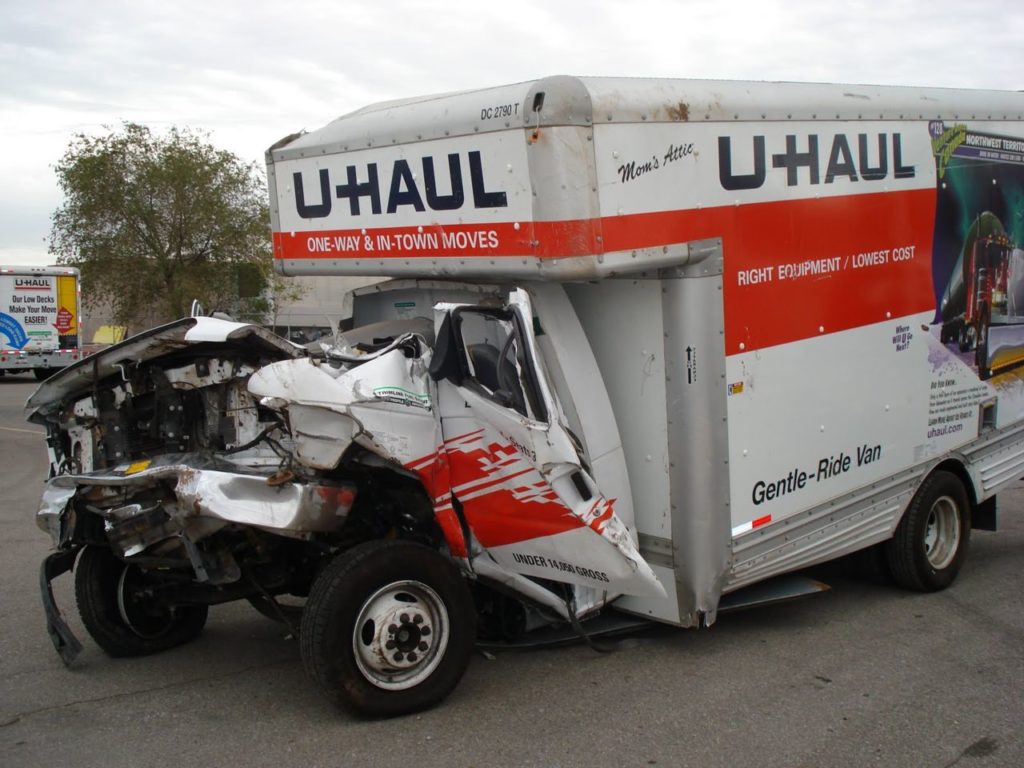
Games with large amount of props but little vehicular support often stash items in a storage unit, dutifully removing them the night before every weekend into a hopefully rented UHaul. A note here; UHaul rental agreements aren’t really all that, and a facility running out of equipment for an already-paid for reservation happens more frequently than publicized. In addition, the low rates advertised on the side of the trucks alongside pictures of smiling white people from Alabama pictured without their MAGA Hats/Klan Hoods only reflect the costs associated with the rental if you put it in neutral, roll it downhill to your destination, and return it within an hour, driving in reverse to run the mileage back to a lower number than when you first picked it up. The actual costs of the rental are far, far higher than advertised. The pain of renting, loading, unloading, and returning UHauls usually discourages most games from going this route after the 3rd event, where the owners find themselves in a hailstorm at 7pm wondering if it would just be easier to drive back with the rear door open, having only to unload anything that doesn’t get scattered across the highway.
Trailers
LARP trailers are reasonably priced for a successful game but come with one heinous caveat – building trailer shelves. If you ever think your relationship with friends or a significant other (or others) is secure, trying building trailer shelves on a hot summer day. If your partnership can survive that, it can damn well survive pretty much anything else. Trailer shelves should be built two bins high, with lengthy storage both underneath and overhead to allow for long objects (tarp walls, long weapons, a 10’ pole if you’re classic DnD fan) and a lip to prevent bins from sliding out during transport. Eyelets can be added in lieu of a lip and bungie cords used to strap everything in place. The aisle down the center should generally remain clear, or used to house items that are taken out first at every event. The afore mentioned translucent bins are actually of use here, as numerous non-costume items such as masks, boxes, and bones can be easily located. In a direct contradiction to previous advice, laying in bins without lids can allow their contents to air out. If you can survive trailer shelves, and have an adequate tow vehicle, a trailer is the way to go.
Hack It!
Once storage has been attained, here are some quick thoughts on how it can be maximized to make your experiences visually impressive and more successful:
- Any large creature builds should be used for multiple events and things like arms or tentacles should be modular in nature – think PVC with joints, locked in place with small bolts. A tubular shaped main body is easiest for storage and transport. Any appendages that cannot be removed will quickly be snapped off when something heavy falls on them or when they get caught on another item when loading/unloading.
- Cloth items can actually be put away damp if packed loosely. However, leather goods, such as bound books, belts, bags, armor or headbands, will develop mold almost instantaneously. Care needs to be taken to dry these items out in the case of inclement weather.
- A huge challenge are weapons for individual roles or one-off creatures. I have seen many games with bins or bags full of weapons that are dutifully loaded and unloaded but never, ever used because X NPC isn’t coming out this event or the town isn’t getting attacked by the candy-cane wielding clown brigade this year/ever again. Carefully consider storage before acquiring large amount of signature weapons.
- Generic set pieces, such as tarp walls or other modeling structures are a great investment. Years of usage can be had from the oft-disappointing black tarps/much better looking stone-painted tarps.
- Specialized set pieces, on the other hand, should have a generic, reusable component to them. For instance, a large anvil decorated with lights or fabric can be epic one weekend and then, stripped of its trappings, returned to the town black smithy the next. The backs of storage units are cluttered with one-off gates and ritual tables that looked fantastic for one epic event and got thrown into a dumpster 3 events later.
- Watch those packets! Especially with on-site storage, packets attract rodents that can chew through just about anything in the cold months hunting for food. And once food is acquired, entire rodent colonies come next. Packets store best in mesh bags, hung off a peg – this allows them to dry out between events and, in case of rodents, easy access for them instead of eating their way through the face of Guxx to get at them.
- The best way to label Bins is to use a strip of duct tape and a permanent marker. You wouldn’t think it would take years to figure this one out; but I have dozens of Bins comically written on with the names of games that are no longer in existence, or characters I don’t play anymore.

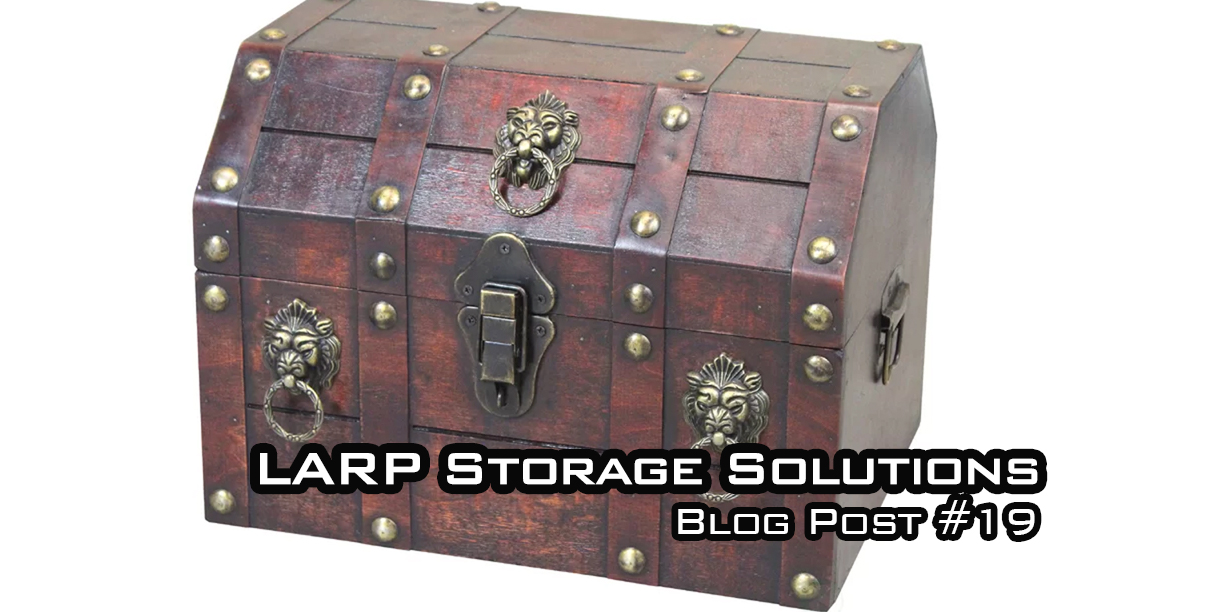
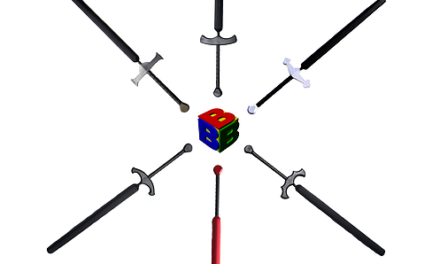


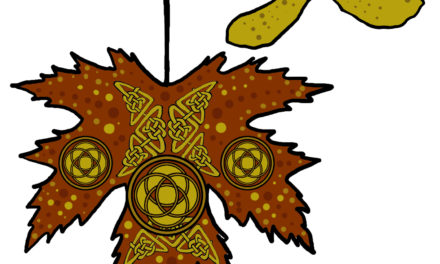
I actually (mostly) had good luck renting a trailer from UHaul. Once you are familiar with the potential pitfalls and can plan around them, it’s not too bad. Also it helps to find a reliable franchise to rent from, since the customer service and selection varies wildly. Although it could be very labor intensive, it wasn’t expensive.
But, ultimately, we decided it was easier to just… build our own site. AMA!
For packet storage, we’ve had good fortune (no rodents in about ten years of event running) with large screw-top canisters meant specifically for storing animal feed in barns, such as Vittles Vault.